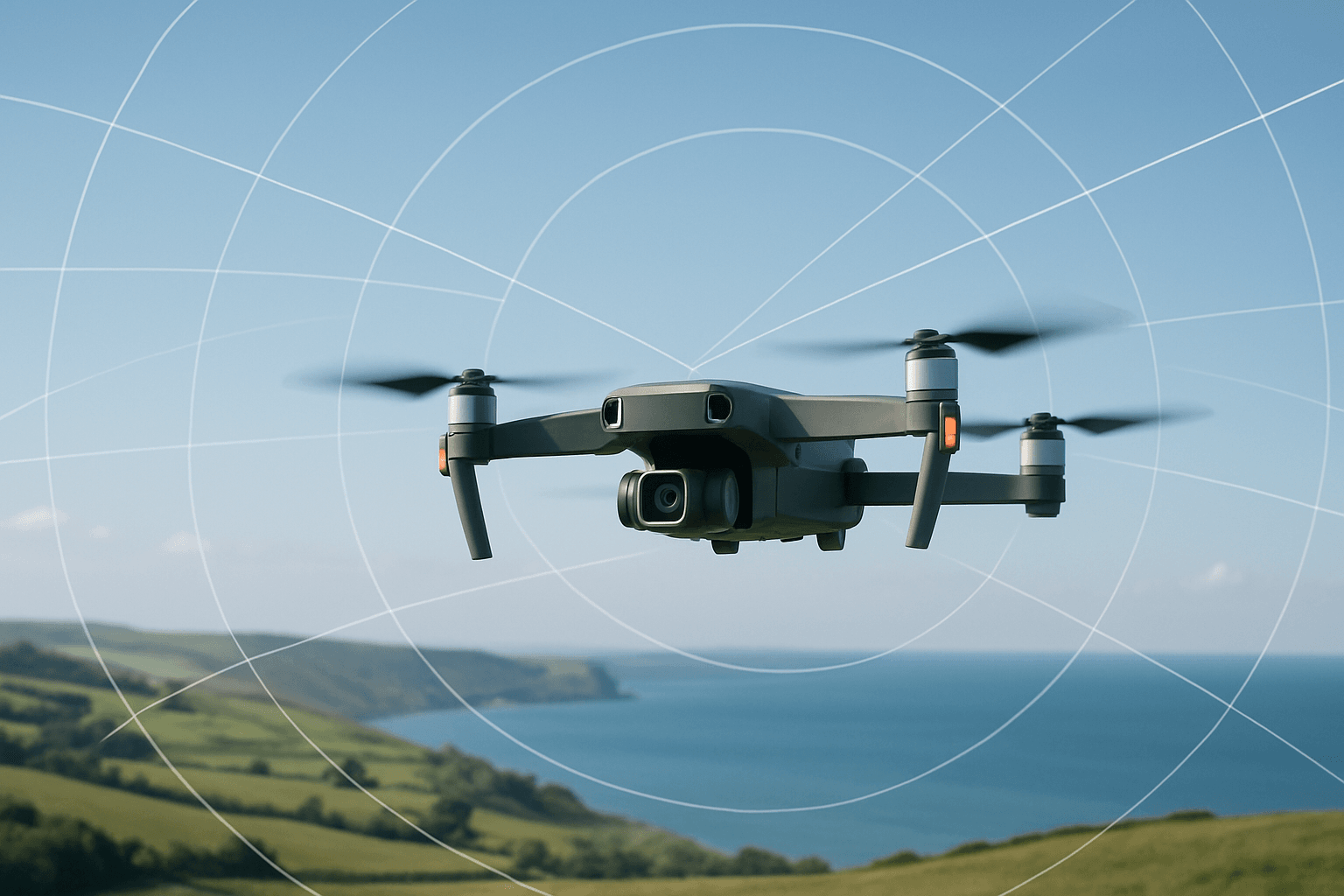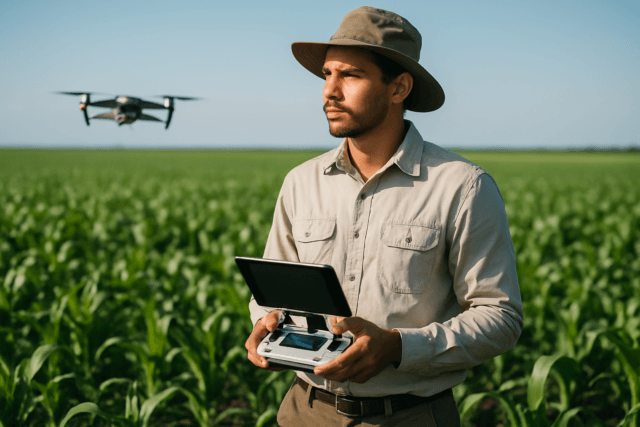So, you’re looking to take to the skies with a drone in the UK? Fantastic! Whether you’re dreaming of capturing stunning aerial photography, inspecting infrastructure, or simply enjoying the thrill of flight, it’s essential to understand the rules of the air. This comprehensive guide will walk you through everything you need to know about drone pilot licenses in the UK as of May 2025, ensuring you stay legal and safe.
1. UK Drone Laws: An Overview
Drone laws in the UK are primarily governed by the Civil Aviation Authority (CAA) through the Air Navigation Order 2016. These regulations are designed to ensure the safety of both manned and unmanned aircraft, as well as people and property on the ground. The CAA continuously updates these regulations to keep pace with the rapidly evolving drone technology and its applications. Recently, on May 8, 2025, the CAA confirmed it would recommend important updates to the UK’s drone regulations following an extensive consultation.
1.1 Key Principles
- Safety First: You must not endanger anyone or anything with your drone.
- Visual Line of Sight (VLOS): Keep your drone in sight at all times (without visual aids like binoculars).
- Altitude Limit: Don’t fly above 400 feet (120 meters).
- Restricted Areas: Avoid flying near airports, airfields, and other restricted airspace without permission.
- Registration and Identification: Ensure you meet all registration and identification requirements.
1.2 Drone Categories
Drone operations in the UK are categorized based on risk level:
- Open Category: For low-risk operations.
- Specific Category: For operations that present a higher risk or fall outside the limitations of the Open Category, requiring authorization from the CAA.
- Certified Category: For high-risk operations, such as transporting people or dangerous goods, requiring certification of the drone and the operator.
Many commercial drone operations fall within the ‘open’ or ‘specific’ categories.
2. Do You Need a Drone License in the UK?
The answer isn’t a simple yes or no. It depends on several factors, including the weight of your drone and how you intend to use it. Here’s a breakdown:
2.1. Recreational Use
If you’re flying a drone for personal enjoyment as a hobby, you generally don’t need a formal “license” in the same way a manned aircraft pilot does. However, you do need to:
- Register as an Operator: If you are responsible for a drone weighing 250g or more, you need to register with the CAA and obtain an operator ID. The registration fee is £10.33, and you must be 18 or over to register. The operator ID is valid for 12 months and must be clearly displayed on your drone.
- Obtain a Flyer ID: Anyone who will be flying a drone (even if it’s not yours) needs to pass an online theory test and obtain a Flyer ID. Even those under 13 must obtain a Flyer ID, but they need to have someone over 18 with them to take the test. Your Flyer ID is valid for 5 years.
2.2. Commercial Use
If you’re using a drone for business or financial gain, the requirements are more stringent. You’ll typically need:
- An Operator ID and Flyer ID: Just as with recreational use, you need to be registered and have passed the online test.
- A Permission for Commercial Operations (PfCO) or Operational Authorisation: To operate a drone commercially, you need permission from the CAA. This is obtained by completing a CAA-approved drone training course and demonstrating your ability to operate a drone safely according to PfCO standards.
- EC785/2004 Compliant Insurance: Commercial drone pilots are legally required to have insurance. The minimum requirement is usually around £1,000,000 public liability, though some environments may require up to £10,000,000.
3. Getting Your Flyer ID and Operator ID: Step-by-Step
3.1. Flyer ID
- Register Online: Head to the CAA’s Drone and Model Aircraft Registration and Education Service (DAMARES) website.
- Prepare for the Theory Test: Study the Drone and Model Aircraft Code to understand the rules and best practices for flying drones in the UK.
- Take the Online Theory Test: The test is free and consists of multiple-choice questions based on the Drone Code.
- Receive Your Flyer ID: Upon passing the test, you’ll receive your Flyer ID, which is valid for 5 years.
3.2. Operator ID
- Register Online: Access the DAMARES website.
- Provide Required Information: You’ll need to provide information about yourself and the type of drone you own.
- Pay the Registration Fee: The fee is currently £10.33.
- Receive Your Operator ID: Once registered, you’ll receive your Operator ID, which is valid for 12 months. Display this ID clearly on your drone.
4. Commercial Drone Licenses: A Deeper Dive
For those looking to use drones for commercial purposes, there are two main qualifications to consider:
4.1. A2 Certificate of Competency (A2 CofC)
- What it is: The A2 CofC is a qualification that allows you to fly drones in the ‘Open’ category, specifically in the A2 subcategory (‘Flying Close to People’).
- Who it’s for: Pilots who want to fly small drones (under 2kg) close to people, maintaining a 50m horizontal separation distance from uninvolved people.
- How to get it: You’ll need to complete an A2 CofC training course and pass a theory examination with a CAA-approved drone training school.
4.2. General Visual Line of Sight Certificate (GVC)
- What it is: The GVC is a more advanced certification that allows you to apply for an Operational Authorisation from the CAA, enabling you to legally and safely operate drones up to 25kg in built-up areas.
- Who it’s for: Commercial pilots who need to operate drones in the ‘Specific’ category, which covers more complex or higher-risk operations.
- How to get it: You’ll need to complete a GVC training course, which includes both theory and practical flight assessments. Once you’ve passed the course, you can apply for Operational Authorisation from the CAA. The application fee for Operational Authorisation is £290.
4.3. Key Differences Between A2 CofC and GVC
| Feature | A2 CofC | GVC |
| ——————- | ——————————————– | ——————————————————————- |
| Category | Open (A2 subcategory) | Specific |
| Drone Weight Limit | Under 2kg | Up to 25kg |
| Flying Restrictions | Fly close to people (50m separation) | Operate in built-up areas (with Operational Authorisation) |
| Training | Online theory training and online test | Theory and practical flight assessments |
| Best For | Low-risk operations with small drones | Complex/higher-risk operations, commercial use in various environments |
5. Key Changes to Drone Regulations in 2025 and Beyond
The CAA is committed to updating drone regulations to support safe growth and innovation in the sector. Here are some key changes to be aware of:
- Remote ID: As of May 2025, the CAA announced that it will be mandatory for all drones over 100 grams with a camera to have a Remote ID from 2026 onwards. Drones bought after January 1, 2026, with a UK1 label, for example, will need to have an active direct remote ID. By January 1, 2028, all drones are required to have direct remote ID.
- Weight Reduction for Registration: The weight limit for drone registration has been reduced from 250g to 100g for drones with a camera. If your drone is over 100g and has a camera, you will need both a Flyer ID and an Operator ID.
- UK Class Markings: The UK is introducing its own class markings for drones, replacing the current European markings of C1, C2, C3, etc., with UK1, UK2, UK3, and so on.
- Renaming of Open Category Subcategories: The CAA is renaming subcategories in the ‘Open’ category to make it more obvious what they allow.
- Toy Drone Exemptions Removed: Exemptions related to ‘toy’ drones are being replaced with a new limit of 100g.
- Flyer ID Training Extended: The free online mandatory Flyer ID training is being extended to users of drones over 100g.
6. Essential Safety Rules and Regulations
Regardless of whether you’re flying for fun or profit, these rules always apply:
- Maximum Flight Altitude: Drones must not exceed 400 feet (120 meters) above the surface.
- Visual Line of Sight (VLOS): Operators must maintain a clear line of sight with the drone at all times.
- Restricted Airspace Compliance: Permission is required before flying in restricted airspace (e.g., near government buildings, military bases).
- Airport No-Fly Zone: No flying within a 5-kilometer (3-mile) radius of airports.
- Distance from People: Drones weighing 250g or more must remain 150 meters away from residential, commercial, or industrial zones.
- Night Flying Regulations: There may be additional restrictions or requirements for flying at night.
- Privacy Laws: Be aware of privacy laws and ensure that any images you obtain using the drone do not violate these laws.
7. Choosing a Drone Training Course
If you decide to pursue commercial drone operations, selecting the right training course is crucial. Here are some factors to consider:
- CAA Approval: Ensure that the training provider is approved by the CAA.
- Course Content: Check that the course covers all the necessary topics, including airmanship, aviation safety, aircraft knowledge, risk assessment, and operational procedures.
- Practical Flight Assessment: Look for courses that include practical flight training and assessment.
- Experienced Instructors: Opt for training providers with experienced instructors, preferably ex-military or commercial pilots.
- Operations Manual Template: A good training company will provide an Operations Manual template and guide you through it step by step.
- Cost: Compare the costs of different courses and consider what’s included (e.g., accommodation, meals, equipment).
8. Staying Up-to-Date
Drone regulations are constantly evolving, so it’s essential to stay informed about the latest changes. Here are some resources to help you stay up-to-date:
- UK Civil Aviation Authority (CAA) Website: The CAA website is the primary source of information on drone regulations in the UK.
- DroneSafe Register: DroneSafe Register provides updates on drone laws and regulations.
- Drone Industry News Websites: Stay updated through industry news websites.
- Drone Forums and Communities: Engage with other drone pilots and enthusiasts in online forums and communities.
9. Drones and Insurance
While insurance isn’t legally required for recreational drone use, it’s highly recommended. Public liability insurance can protect you financially if your drone causes damage or injury to others. For commercial drone operations, insurance is a legal requirement.
10. The Future of Drone Regulations
The CAA is committed to creating a regulatory framework that is ready for the future, supporting safe, responsible drone use while enabling the sector to grow and innovate. Future regulations may focus on:
- Further Integration of Drones into Airspace: As drone technology advances, regulations may evolve to allow for greater integration of drones into controlled airspace.
- Autonomous Operations: Regulations may need to adapt to accommodate increasingly autonomous drone operations.
- New Applications of Drone Technology: As drones are used for new and innovative purposes, regulations will likely need to be developed to address the specific risks and challenges associated with these applications.
By understanding and complying with UK drone laws and regulations, you can enjoy the many benefits of drone technology while ensuring the safety of yourself and others. Fly safe!.





